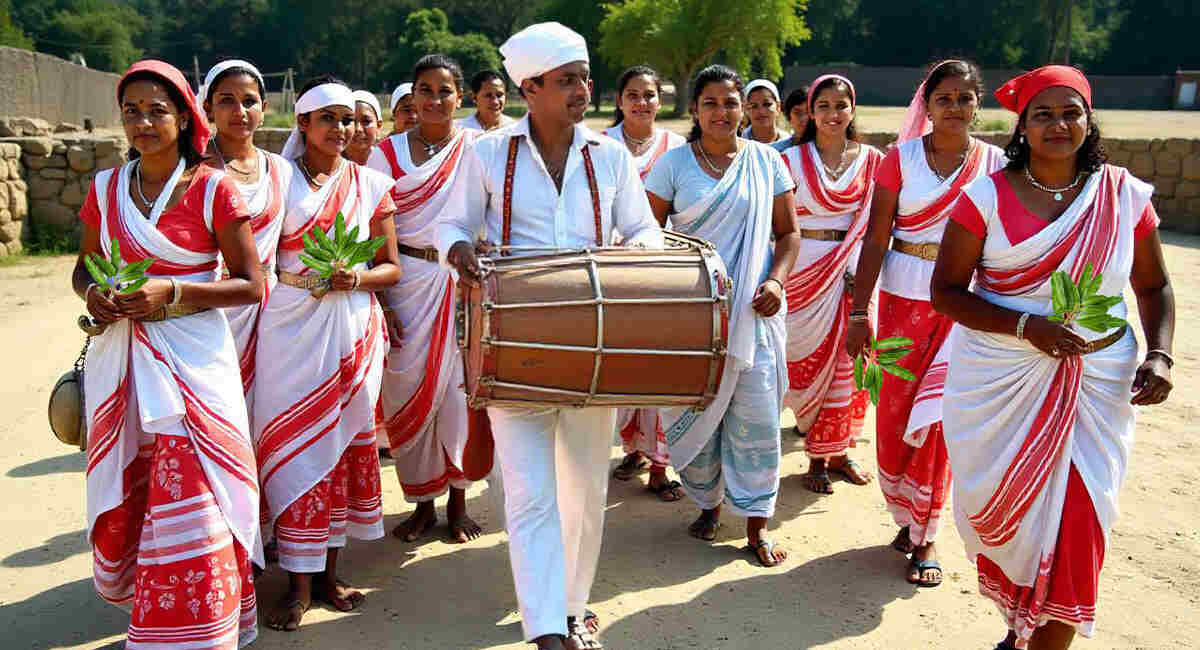Sarhul Festival
India, a land of rich cultural heritage and diversity, is home to countless tribal communities whose traditional festivals and rituals remain rooted in nature and spirituality. Among them, the Sarhul Festival, predominantly celebrated in the tribal belts of Odisha, Jharkhand, and Chhattisgarh, is a vivid tribute to Mother Earth and the cycle of seasons. This ancient festival holds deep significance in Odisha, especially among indigenous groups like the Ho, Munda, Oraon, and Santhal tribes. Sarhul is more than just a festival — it is a spiritual communion with nature, a cultural assertion, and a prayer for peace and prosperity.
Origin and Meaning of Sarhul
The word “Sarhul” is derived from two local words: “Sar” meaning Sal tree, and “Hul” meaning collective worship or rejoice. Together, “Sarhul” symbolizes the worship of the Sal tree, which is considered sacred among tribal communities. The blooming of Sal flowers marks the beginning of the New Year for these tribes and also signals the onset of spring, a season of rejuvenation and life.
The festival is traditionally observed in the month of Chaitra (March-April) when the Sal trees start blossoming, painting the forests in hues of white and cream. For tribal people, who rely closely on forest produce and agriculture, this period marks the beginning of a new agricultural cycle, making Sarhul a crucial seasonal festival.
A Festival Rooted in Nature Worship
At the heart of Sarhul lies the deep respect and reverence tribals hold for nature. The tribal people personify the Earth as “Dharti Aayo” (Mother Earth) and center the festivities around expressing gratitude for her benevolence. They observe Sarhul by thanking Mother Nature for sustenance and seeking blessings for a good harvest, health, and harmony.
The Sal tree holds a central role in the festival. Its flowers are offerings and symbols of purity, life, and continuity. The tribal belief is that the blooming of Sal flowers is a sign that nature is ready to embrace the new agricultural cycle.
Rituals and Celebrations
The Sarhul festival unfolds over three days, each filled with rituals, music, and joy. The village priest, known locally as the Pahan or Dehuri, leads the celebrations and plays a crucial spiritual role.
Day 1 – Worship and Sacrifice
On the first day, the Pahan performs rituals at the Sarna Sthal, a sacred grove usually located at the edge of the village. The tribal people consider the grove the abode of spirits and deities. They offer prayers and gifts to the Earth goddess and other ancestral spirits. Traditionally, they sacrifice chickens and goats and offer Sal flowers to appease the deities. They believe the blood from the sacrifice brings fertility to the land and protection to the people.
The Pahan also plants three Sal branches in a pot of water, and based on their behavior over the next few days, he predicts the coming year’s weather — whether it will be dry, rainy, or stormy.
Day 2 – Community Feasting and Dancing
On the second day, communities celebrate with communal feasting and tribal dances. People clean their homes and prepare traditional dishes using seasonal ingredients. The favorite drink during Sarhul is the indigenous Handia (rice beer), brewed locally and served during the celebrations.
Tribal men and women wear traditional attire, with women adorning themselves in colorful sarees, floral ornaments, and beaded jewelry. Dance and music become the soul of Sarhul, with people gathering in open spaces, dancing in circles to the beat of Mandar drums, Nagada, and flutes, and singing songs that honor the Earth, love, and life.
Day 3 – Visits and Social Bonding
On the final day, people visit the homes of friends and relatives to exchange greetings, food, and blessings. Elders are respected, and young ones are encouraged to learn about the traditions and cultural meanings behind the rituals. Tribal communities deeply emphasize community, unity, and harmony during Sarhul.
Tribal Identity and Cultural Preservation
Sarhul isn’t merely a festival; it embodies tribal identity, ecological wisdom, and collective memory. In Odisha, tribal populations form a significant part of the state’s demography. Sarhul reinforces the importance of preserving indigenous traditions amid rapid modernization.
The festival also reflects the tribes’ sustainable way of life—their understanding of nature’s rhythms, forest ecology, and the interconnectedness of all life forms. Recently, tribal leaders and cultural activists have highlighted Sarhul as a symbol of resistance against deforestation, displacement, and ecological degradation.
Final Thoughts
The Sarhul Festival in Odisha is a vibrant seasonal celebration. It honors Mother Nature, reinforces community bonds, and celebrates cultural identity. As the Sal flowers bloom in spring, they symbolize the beauty of coexistence and the rhythm of the seasons. The festival reflects the deep wisdom found in Indigenous cultures and their harmonious connection to nature.
In a world increasingly disconnected from nature, Sarhul stands as a beacon. It reminds us to tread gently on the Earth and to celebrate nature’s gifts with reverence, joy, and unity.


